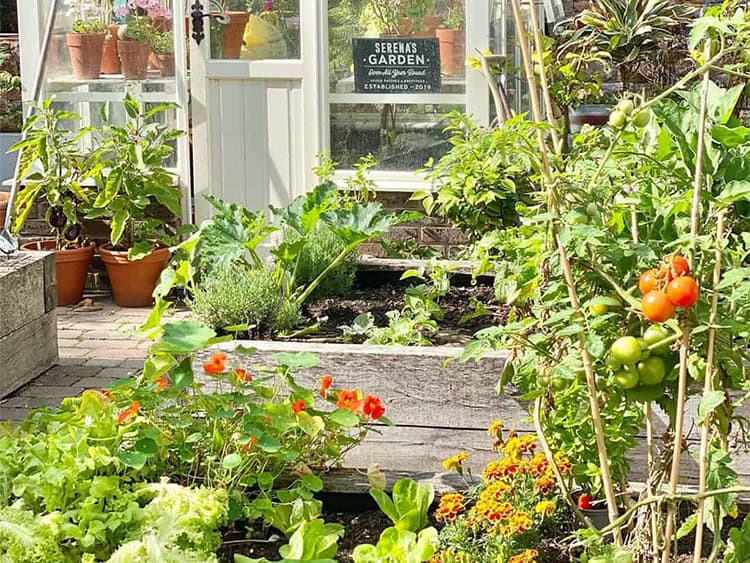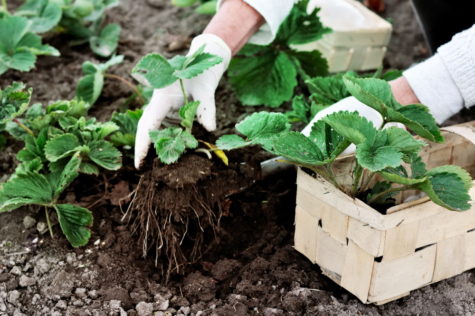Green beans, also known as string beans or French beans, are super easy to grow in the UK. Learn how to grow green beans in your own garden, and within just a few weeks you’ll be enjoying your harvest in salads, stir-frys and as a side to delicious hearty meals. Let’s look at what green beans will need to thrive in your garden.
Growing green beans: Where to begin?
Along with providing nutrient-rich soil, the most important thing to remember when learning how to grow green beans is that they really don’t handle the cold. Make sure to keep them safe from frost, and don’t start planting them until the temperatures have started to climb for spring.
Plant in: April, May, June, July
Move outdoors in: June, July
Harvest in: July, August, September
Sowing green beans

Like many other crops, there are two growing varieties of green beans; dwarf (or bush) beans, and climbing (or pole) green beans. Dwarf types grow quickly but will only sprout beans for a few weeks, while climbing beans are a little slower but provide yields through to September.
Both varieties need lots of sunshine and very fertile soil that drains well. When you’re preparing soil, mix in rich compost and well-rotted manure to slowly release nutrients into the soil and create drainage throughout your vegetable patch or pots. You can learn how to generally improve your garden soil condition for better crops all-round.
You can start growing green beans indoors around the start of May, by planting single beans in individual pots. Gently push them about 5cm into the soil, position them on a sunny windowsill and cover them with a clear plastic propagator lid so they can retain plenty of heat. Water them regularly.
Hardening off green beans

When you’ve grown seedlings indoors, they will need to be hardened off before they can stay completely outside – and green beans are no exception! Green beans are ready to start being hardened off when they’re about 8cm tall.
You can harden green beans off by moving them outside for a few hours each day, gradually increasing the duration from a couple of hours, to all day, to overnight over about 2 weeks. This will help them acclimatise to the wind, colder temperatures and increased moisture loss. After two weeks (and, again, once you’re sure there won’t be another frost), you can plant them into the soil or move the pots outside permanently.
Planting green beans outdoors
Green beans can generally tolerate being planted outdoors from late spring – towards the end of May. If the temperatures are still low at night, give your seedlings a cloche cover to keep warm, or place pots in a greenhouse or cold-frame.
Sow your green beans in a sunny spot, and use a garden fork to mix in lots of garden compost to prepare the soil.
Growing green beans

Dwarf green beans beans, or bush green beans, reach about 45cm in height. Best practice is to grow them in close clusters (about 15cm apart), so that they can use each other for support. Keep dwarf green beans well-watered, and don’t let the soil dry out. Additional compost or a layer of mulch will help with water retention.
Climbing green beans will need a physical support as they grow. There are a few ways you can provide this with bamboo canes, but the two most common are creating double rows of canes, or building tripods or wigwams.
For double rows, buy 1.8m/6ft bamboo canes and push them into the ground at 15cm intervals, with about 45cm between the two rows. Angle them inwards at the top, connect your rows with a horizontal cane, and tie them together with twine.
Tripods can be more space-efficient in certain setups, and are better for container gardening. Using the same length bamboo canes (1.8m/6ft), space 3-5 in a ring about 15cm away from each other and tie at the top. This video about making wigwams for vegetables shows you the steps.
For both formations, plant one beanstalk at the base of each bamboo cane – you might need to gently tie the shoots to the poles to help them initially cling.
Harvesting green beans

Green bean pods are ready to harvest when they’re about 10cm long, before the beans are visible through the skin of the pod. One way to test their ripeness is whether they snap in half easily.
If you pick of fresh green beans as soon as they’re ready, both bush and climbing green bean varieties will continue produce more beans for several weeks (and even longer for climbing green beans).
Common problems when growing green beans

Learning how to grow green beans comes with recognising the signs of problems with your crops. More accurately, you’ll need to know how to deal with the garden pests that are attracted to green bean seedlings and fruits, as these will be the root of most of your challenges!
- Slugs (and sometimes snails) are going to want to feast on your seedlings when you first plant them into the soil, destroying the tips and stunting growth. Planting them indoors and moving them outside once they’re tall enough is a good way to limit damage. Read our tips for keeping slugs and snails out of your garden for advice about dealing with them.
- Aphids can also affect green beans, but they’re usually more attracted to other crops, so shouldn’t pose too much of a problem. If you do notice aphids, you can pinch off host stems or leaves, or squish individual bugs when you spot them.
- Birds can sometimes cause a problem when you’re growing green beans, especially pigeons. The best way to stop birds from getting at your green beans is to cover them with a mesh.
Now you know how to grow green beans, don’t forget to check out our other posts on growing crops in your garden. There’s nothing more satisfying than cultivating enough veggies to keep your table stocked throughout the year – so get planting!

Save this pin for later






